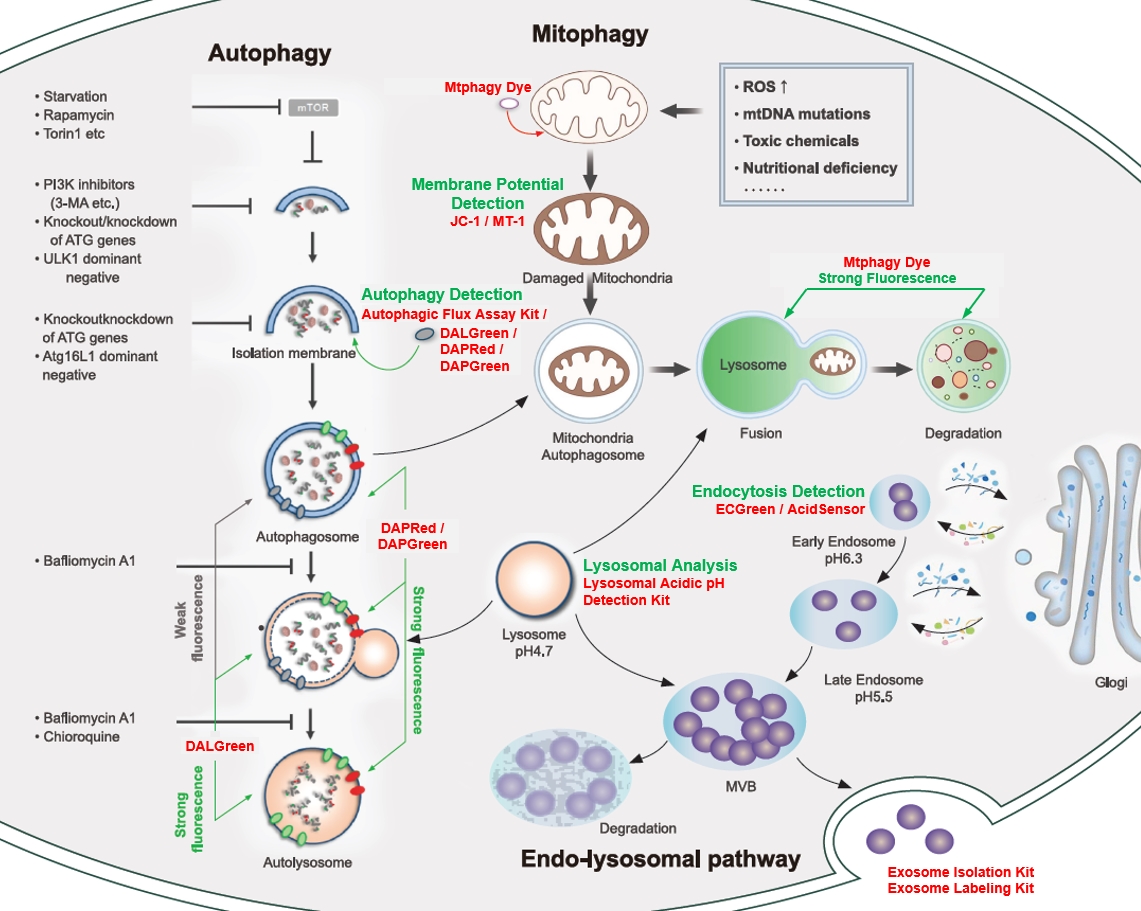|
Autophagy is a cellular process that degrades and recycles damaged organelles, misfolded proteins, and other cellular debris, and is critical for maintaining cellular homeostasis. Dysregulated autophagy is often observed in the context of neurodegeneration, where either excessive or insufficient autophagic activity can contribute to the accumulation of toxic proteins and organelle dysfunction that are hallmarks of neurodegenerative diseases. Enhancing autophagy has been shown to alleviate symptoms and pathology in models of diseases such as Alzheimer's, Parkinson's, and Huntington's, suggesting a protective role against neurodegeneration. Conversely, excessive autophagy can lead to cell death, suggesting that a delicate balance is required for neuronal health and highlighting the complexity of targeting autophagy as a therapeutic strategy for neurodegenerative diseases.
|
-
Autophagy enables microglia to engage amyloid plaques and prevents microglial senescence
Click here for the original article: Insup Choi, et. al., Nature Cell Biology, 2023.
Point of Interest
- Inhibiting microglial autophagy leads to the disengagement of microglia from amyloid plaques, exacerbating neuropathology in mice with Alzheimer's Disease (AD).
- An autophagy deficiency fosters the development of senescent microglia.
- Pharmacological removal of autophagy-deficient senescent microglia can alleviate neuropathology in mice with AD.
-
Microglial-to-neuronal CCR5 signaling regulates autophagy in neurodegeneration
Click here for the original article: Beatrice Paola Festa, et. al., Neuron, 2023.
Point of Interest
- Activated microglia mediate non-cell-autonomous inhibition of neuronal autophagy.
- CCL-5, CCL-4, and CCL-3 derived from microglia activate the neuronal CCR5 receptor, leading to the inhibition of neuronal autophagy.
- Levels of CCR5, CCL-3, CCL-4, and CCL-5 are elevated in the brains of mice with Huntington’s disease and tauopathy.
- Inhibiting CCR5, either pharmacologically or genetically, ameliorates neurodegeneration in mice.
-
Mitochondrial control of microglial phagocytosis by the translocator protein and hexokinase 2 in Alzheimer’s disease
Click here for the original article: Lauren H. Fairley, et. al., PNAS, 2022.
Point of Interest
- The translocator protein (TSPO) is pivotal for respiratory metabolism and energy supply in microglia.
- Hexokinase-2 (HK) affects glycolytic metabolism and phagocytosis through its interaction with mitochondria.
- Mitochondrial HK influences glycolysis and inflammation, and its displacement improves phagocytosis in TSPO-deficient microglia.
- Alzheimer’s beta-amyloid drastically stimulated mitochondrial HK recruitment in cultured microglia, which may contribute to microglial dysfunction in Alzheimer’s disease.
|
|
Related Techniques
|
| Detection (Reagent) |
Samples |
Reference |
Autophagosome/ Autolysosome
(Autophagic Flux Assay Kit) |
Immortalized Fischer rat Schwann cells |
International Journal of Molecular Sciences |
Autolysosome
(DALGreen) |
Cortical neurons |
Neurobiology of Disease |
| PC12 cells (a mixture of neuroblastic cells and eosinophilic cells) |
Hindawi |
Autophagosome
(DAPGreen or DAPRed) |
Neurons from mouse embryonic stem cells |
Life Science Alliance |
| Hippocampal neurons |
PNAS |
| N2a cells (Mouse Albino neuroblastoma) |
International Journal of Molecular Sciences |
Mitophagy
(Mtphagy Dye) |
Neural progenitor cell (NPC) |
International Journal of Molecular Sciences |
| Primary cortical neuronal (CxN) cells |
Cells |
| Brain slices (mice) |
The FEBS Journal |

-
Link to each product (red at left figure)
Autophagy Detection
Autophagic Flux Assay Kit - First-choice product
DAPRed - Autophagosome detection
DAPGreen - Autophagosome detection
DALGreen - Autolysosome detection
Mitophagy Detection
Mitophagy Detection Kit and Mtphagy Dye
Mitochondrial Membrane Potential Detection
JC-1 / MT-1
Lysosomal Analysis
Lysosomal Acidic pH Detection Kit
Green/Red, Green/Deep Red
Endocytosis Detection
ECGreen-Endocytosis Detection
AcidSensor Labeling Kit
Exosome
Exosome Isolation Kit
Exosome Membrane Labeling Kit
Green / Red / Deep Red
|
















